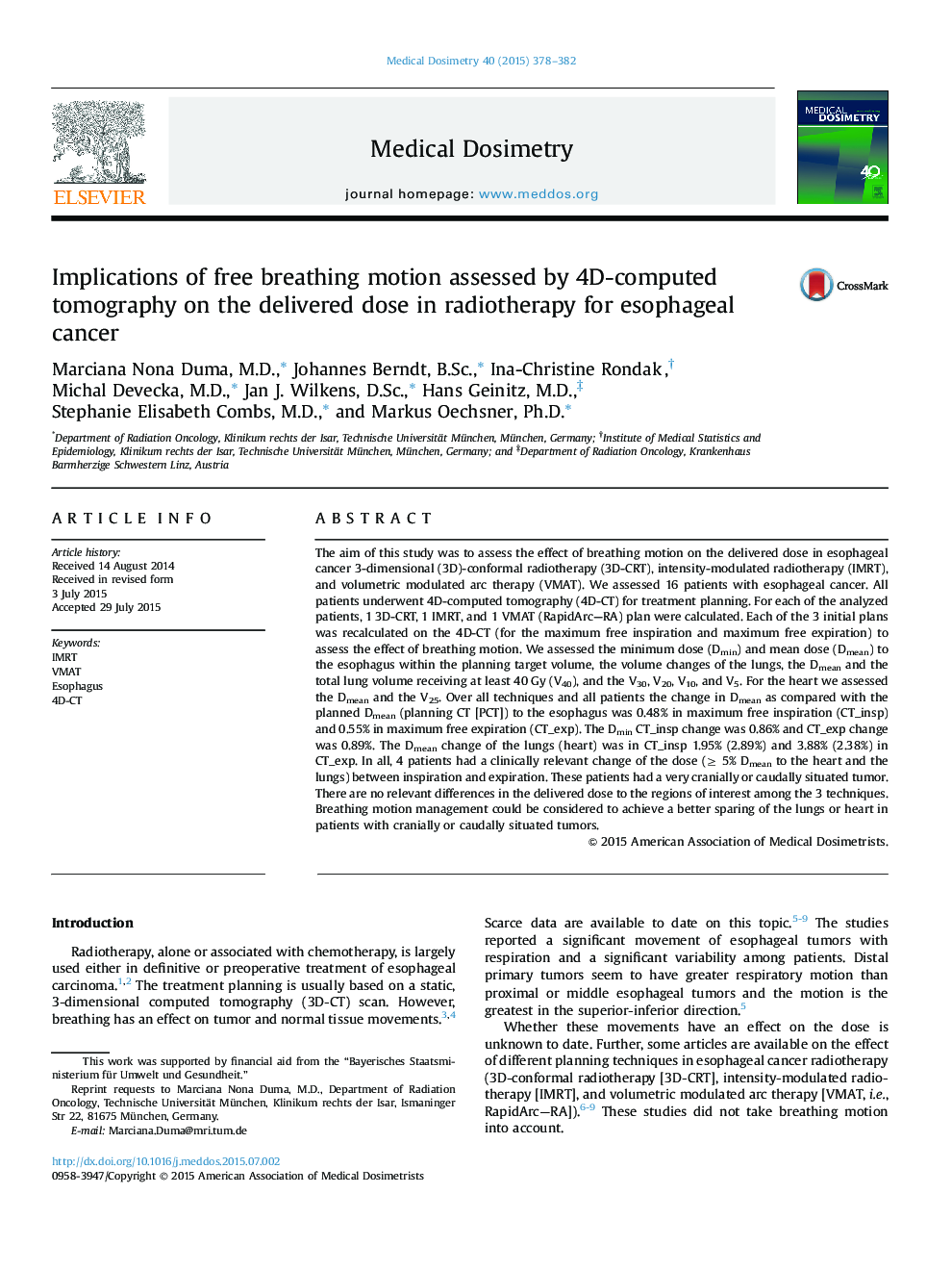| کد مقاله | کد نشریه | سال انتشار | مقاله انگلیسی | نسخه تمام متن |
|---|---|---|---|---|
| 1884882 | 1533330 | 2015 | 5 صفحه PDF | دانلود رایگان |
عنوان انگلیسی مقاله ISI
Implications of free breathing motion assessed by 4D-computed tomography on the delivered dose in radiotherapy for esophageal cancer
دانلود مقاله + سفارش ترجمه
دانلود مقاله ISI انگلیسی
رایگان برای ایرانیان
کلمات کلیدی
موضوعات مرتبط
مهندسی و علوم پایه
فیزیک و نجوم
تشعشع
پیش نمایش صفحه اول مقاله

چکیده انگلیسی
The aim of this study was to assess the effect of breathing motion on the delivered dose in esophageal cancer 3-dimensional (3D)-conformal radiotherapy (3D-CRT), intensity-modulated radiotherapy (IMRT), and volumetric modulated arc therapy (VMAT). We assessed 16 patients with esophageal cancer. All patients underwent 4D-computed tomography (4D-CT) for treatment planning. For each of the analyzed patients, 1 3D-CRT, 1 IMRT, and 1 VMAT (RapidArc-RA) plan were calculated. Each of the 3 initial plans was recalculated on the 4D-CT (for the maximum free inspiration and maximum free expiration) to assess the effect of breathing motion. We assessed the minimum dose (Dmin) and mean dose (Dmean) to the esophagus within the planning target volume, the volume changes of the lungs, the Dmean and the total lung volume receiving at least 40 Gy (V40), and the V30, V20, V10, and V5. For the heart we assessed the Dmean and the V25. Over all techniques and all patients the change in Dmean as compared with the planned Dmean (planning CT [PCT]) to the esophagus was 0.48% in maximum free inspiration (CT_insp) and 0.55% in maximum free expiration (CT_exp). The Dmin CT_insp change was 0.86% and CT_exp change was 0.89%. The Dmean change of the lungs (heart) was in CT_insp 1.95% (2.89%) and 3.88% (2.38%) in CT_exp. In all, 4 patients had a clinically relevant change of the dose (⥠5% Dmean to the heart and the lungs) between inspiration and expiration. These patients had a very cranially or caudally situated tumor. There are no relevant differences in the delivered dose to the regions of interest among the 3 techniques. Breathing motion management could be considered to achieve a better sparing of the lungs or heart in patients with cranially or caudally situated tumors.
ناشر
Database: Elsevier - ScienceDirect (ساینس دایرکت)
Journal: Medical Dosimetry - Volume 40, Issue 4, Winter 2015, Pages 378-382
Journal: Medical Dosimetry - Volume 40, Issue 4, Winter 2015, Pages 378-382
نویسندگان
Marciana Nona M.D., Johannes B.Sc., Ina-Christine Rondak, Michal M.D., Jan J. D.Sc., Hans M.D., Stephanie Elisabeth M.D., Markus Ph.D.,